11 Hispanic Paintings That Stand the Test of Time
- 11 Famous Hispanic paintings
- 1. Guernica - Pablo Picasso
- 2. Dos Fridas - Frida Kahlo
- 3. Las Meninas - Diego Velazquez
- 4. La Marcha de la Humanidad en la Tierra y Hacia el Cosmos - David Alfaro Siqueiros
- 5. Bailarina en la Barra - Fernando Botero
- 6. La Maja Vestida - Francisco Goya
- 7. Sueno de una Tarde Dominical en la Alameda Central - Diego Rivera
- 8. La Creacion de Las Aves - Remedios Varo
- 9. La Persistencia de la Memoria - Salvador Dali
- 10. El hombre en Llamas by Clemente Orozco
- 11. Carnaval del arlequin - Joan Miro
- Learn Spanish to Appreciate Hispanic Artists
The search for top Hispanic art can be overwhelming and confusing. That's why I've created a list of Hispanic paintings and left my comments about them.
What does the word "Hispanics" mean? Hispanics descend from people who spoke or speak Spanish. "Latinos", on the other hand, are descendants of those born in Latin America.
You can be Hispanic or Latino, but not both. And that’s the tricky part that many people confuse.
Let’s take a look at the 11 most popular Hispanic paintings!
11 Famous Hispanic paintings
These artists were all risk-takers who did not doubt their ability to incorporate unseen elements. Many artists used their talent to depict social struggles and protest the power brokers.
1. Guernica - Pablo Picasso

During the Spanish Civil War, a German Legion with Italian fighter aircraft destroyed the Biscayan town of Guernica to support the Francoists.
Pablo Picasso began this famous Hispanic work days after the incident. "Guernica", not only a mural but also a timeless symbol commemorating those who suffered the effects of the war, was seen as a part of this painting. It transformed the borders of the art world.
Cubism was born in the mind of this innovative author. Many people believe he is one of the most impactful Hispanic artists of all time. Guernica is on display at the Museo Reina Sofia.
2. Dos Fridas - Frida Kahlo
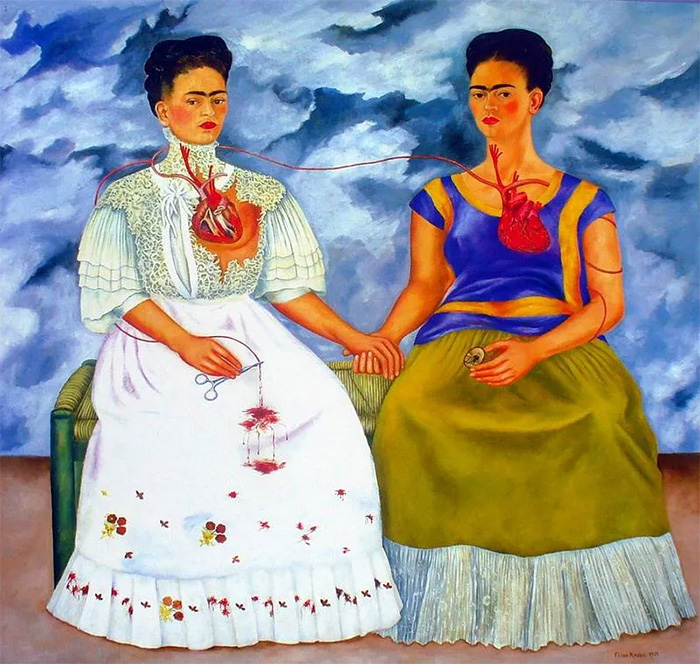
For modern Hispanic artists like Frida Kahlo, separating the art and the artist is impossible. Frida Kahlo is the most famous Latin American artist. She achieved international fame in her lifetime and now has legendary status.
Tragedies and struggles taint Kahlo's life story. Her expression of national identity and social-political views made her an icon.
Dos Fridas (or "Two Fridas") represents the before and after her husband, Diego Rivera, abandoned her. The one dressed in European clothing represents her time spent in Paris. The other is wearing a Tehuana from Oaxaca.
It is one of the best-known Hispanic paintings because it contains all the characteristics of Frida Kahlo's work: a self-portrait surrealist with linked eyebrows, duality, opposites, conceptualism, vibrant colors, the Tehuana costume, and symbolism.
3. Las Meninas - Diego Velazquez
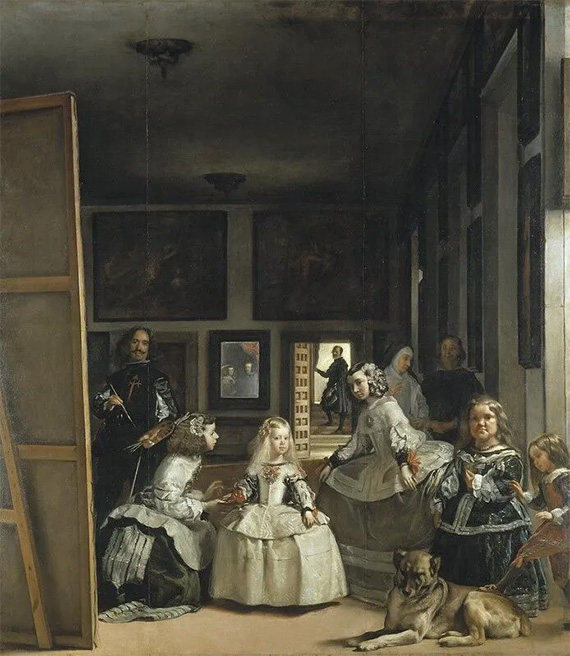
Las Meninas is a representation of the intimacy and familiarity of the royal environment. The technique uses perspective, contrasts between light and dark, and distribution of elements and fronts.
This is a large-format painting of a well-known Hispanic artist. It measures 10 feet in length and 8 feet in height. The canvas had to be sewn together. This masterpiece is on display at the Museo del Prado.
Diego Velazquez was a prolific Baroque painter born in Seville (Spain). Many notable figures, including the Pope and King, patronized him. Pablo Picasso, Fernando Botero, and other famous artists in Spanish-speaking countries painted their own versions of Las Meninas.
4. La Marcha de la Humanidad en la Tierra y Hacia el Cosmos - David Alfaro Siqueiros

Visit the Siqueiros Polyforum, located in the heart of Mexico City. The largest mural in the world is the result of David's work on the inside and outside surfaces at the Siqueiros Polyforum.
The March of the Whole Humanity on the Planet Earth is a meticulously crafted analogy of Michael Chapel. It expresses the human march towards freedom.
David Alfaro Siqueiros is a prominent figure in the Mexican and Latin American muralism art movements. He was convinced art was the primary vehicle for creating and transmitting popular consciousness.
At age 11, he recreated Raphael's Madonna della Seggiola. In his replica, he proved his innate talents. Siqueiros was a member of the Constitutionalist Army and participated in many demonstrations against the educational methods used by his academy. Siqueiros incorporated muralism, sculpture, and many other elements into his work.
5. Bailarina en la Barra - Fernando Botero
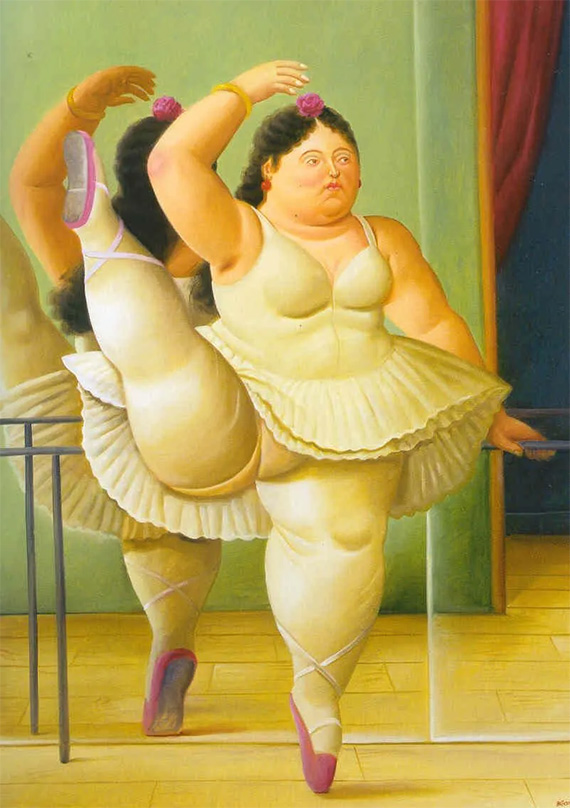
Botero's paintings may seem humorous, but they all have a socially political background. In "Dancer at the Bar," a classical ballet dancer poses in a ballroom. This may be a commentary on the expectations of the world that girls in the dance industry are thin.
Botero is a name that many associate with South American art. Fernando Botero, a native of Medellin, Colombia, has made a name for himself with his unique style, today known as Boterism.
He recreates and creates figures with exaggerated dimensions. Fernando is an artist and sculptor despite his family's efforts to get him interested in bullfighting.
6. La Maja Vestida - Francisco Goya

Francisco Goya's masterpiece "The Clothed Maa" is a work of art. Maja's identity is still a mystery. He painted it to show that women can be seductive no matter what they wear.
Goya's loose brushstrokes, thick paint layers, and use of loose brushes reflected his confidence in the canvas. The piece's beauty is partly due to her thin, girded tunic, which suggests a fan nearby.
He was known as Goya and was born in Spain. He also spent time in France and Italy. He was a huge admirer of Diego Velazquez and began his career by imitating the artist's work. Francisco was the founder of the Impressionist movement.
7. Sueno de una Tarde Dominical en la Alameda Central - Diego Rivera

Diego Rivera painted many murals that are considered to be emblematic of Hispanic art. "Sunday Afternoon Dream" at Central Alameda contains important Mexican figures, like La Catrina and Frida Kahlo, who reflect the periods of colonization and independence. Diego Rivera appears in the painting as a young boy running through the village square.
During his lifetime, Diego Rivera, a Latin American artist and Hispanic cultural icon, was an important figure in Latin American art. He was a member of "The Big Three" along with Clemente Siqueiros and David Alfaro Siqueiros, pioneering muralists in Mexico.
Rivera's frescoes helped establish Mexican art in the international scene. Bold colors, prehispanic artwork, flowers, historical passages, and Mexican cultural elements characterize his work.
8. La Creacion de Las Aves - Remedios Varo

Believe it or not, "The Creation of the Birds" is Remios Varo’s self-portrait, or at least her vision when it is time to unleash her creativity. While making birds, her hands are able to use science, alchemy, and magic.
Remedios was born in Girona, Spain, but she developed most of her works in Mexico. She was also naturalized as a Mexican. Remedios Varo was one of the few painters who did not confine their creativity to canvas. Varo also painted furniture, masks, and objects.
9. La Persistencia de la Memoria - Salvador Dali
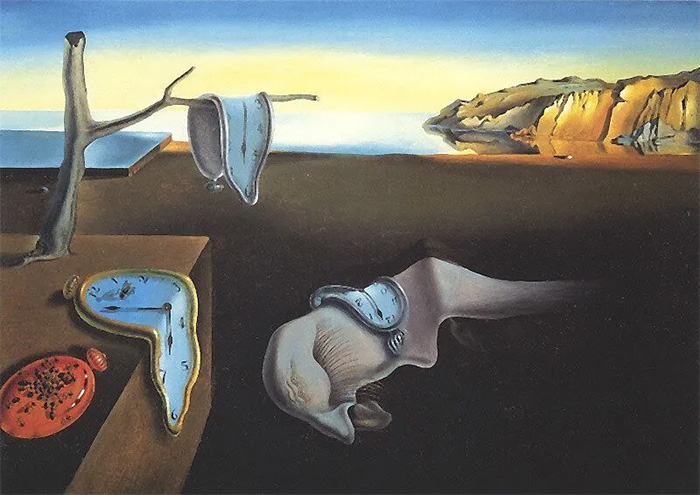
Dali's masterpiece is "The Persistence of Memory". Salvador's surrealist, dadaist elements are wrapped up in an oniric ambiance, accentuating a strangeness that perfectly matches his character.
Salvador Dali is the most famous surrealist artist. He was known for his eccentricity and determination. Elephants on stilts and melted clocks were also among his many other works.
Dali was a filmmaker, illustrator, photographer, and he even published a book about his famous dinner parties.
10. El hombre en Llamas by Clemente Orozco
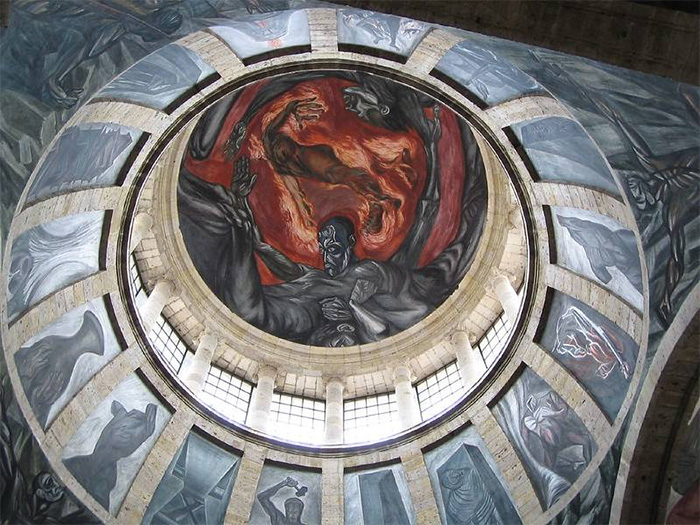
The Man in Flames, or The Man of Fire, is one of Orozco's most famous Hispanic paintings. The 36-foot diameter represents the Greek Myth of Prometheus – the God who stole fire from Olympus to give it to mankind. This was the beginning of civilization and progress.
Still, Zeus was not pleased and chained Prometheus to a stone. An eagle ate his liver every day until the end. The painting depicts the four basic elements. It is one of the 53 paintings at the Cabanas Museum.
Orozco Rivera and Siqueiros, after the Mexican Revolution, made it their mission, through colorful and detailed murals, to alphabetize the Mexican people by showing Mexican historical passages that glorified the worker and rationalism.
After many had destroyed unity in their minds, they supported and claimed unity. Orozco’s art is primarily about social injustice. His famous Hispanic works are displayed at Instituto Cultural Cabanas, Guadalajara in Mexico.
11. Carnaval del arlequin - Joan Miro
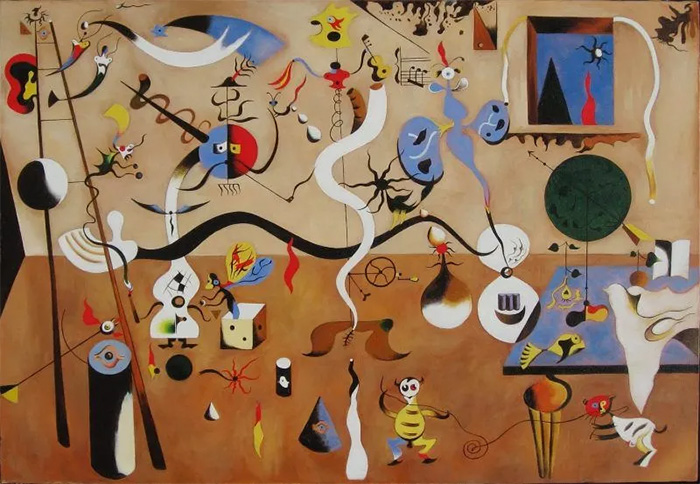
Joan Miro, who painted "Harlequin Carnival" without funds, was likely inspired by childhood memories, spontaneity, and somnolence. He attempted to depict the hallucinations that he experienced. Miro's fortune changed dramatically when he displayed at the Peinture Surrealiste in Paris.
Joan Miro is a Catalan artist who was also a sculptor, painter, set designer, ceramicist, and printmaker. He was a part of both the automatism and surrealism movements. The latter involves letting your unconscious mind control the painting. He was an influence on Hispanic culture, expressionists, and Jackson Pollock. Joan was among the top artists to have enjoyed wealth and fame in his lifetime.
Learn Spanish to Appreciate Hispanic Artists
It is fascinating to learn about the history and background of these famous Hispanic works and their authors. Art can be a window to other cultures and thinking. Why not learn Spanish and another language at the same time?
It is easy to travel through 22 countries by learning Spanish. Join a global community of more than 580 million Spanish-speaking people.
No Comments Yet...